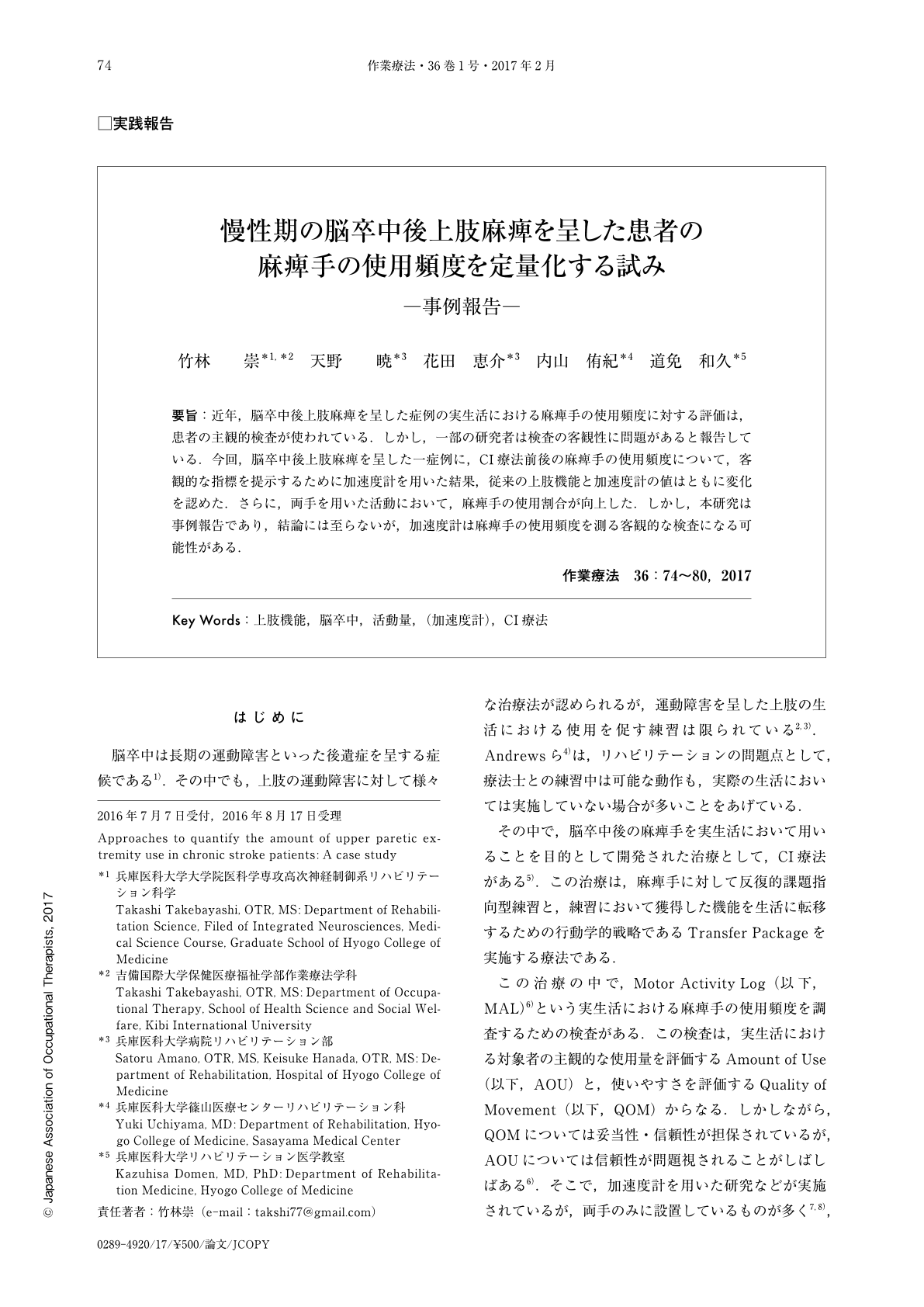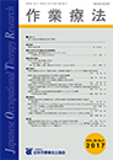Japanese
English
- 販売していません
- Abstract 文献概要
- 1ページ目 Look Inside
- 参考文献 Reference
- サイト内被引用 Cited by
要旨:近年,脳卒中後上肢麻痺を呈した症例の実生活における麻痺手の使用頻度に対する評価は,患者の主観的検査が使われている.しかし,一部の研究者は検査の客観性に問題があると報告している.今回,脳卒中後上肢麻痺を呈した一症例に,CI療法前後の麻痺手の使用頻度について,客観的な指標を提示するために加速度計を用いた結果,従来の上肢機能と加速度計の値はともに変化を認めた.さらに,両手を用いた活動において,麻痺手の使用割合が向上した.しかし,本研究は事例報告であり,結論には至らないが,加速度計は麻痺手の使用頻度を測る客観的な検査になる可能性がある.
The outcome measures to assess the frequency of paretic arm use in activities of daily living in stroke patients were mainly used as subjective patient assessments. However, some researchers question the objectivity of such assessments in measuring upper extremity use in activities of daily living. This case report used accelerometer values to objectively assess the frequency of use of the paretic arm in activities daily living between pre- and post-constraint-induced movement therapy (CI therapy) for a stroke patient. The CI therapy intervention improved the conventional tests score for upper extremity function in activities of daily living, and accelerometer values of the paretic arm. Moreover, the accelerometer values of the paretic arm indicated an improvement the frequency of use of the paretic arm in bimanual activities. Although case study results are generally inconclusive, accelerometer values might be an objective method to assess the amount of paretic arm use in activities of daily living.

Copyright © 2017, Japanese Association of Occupational Therapists. All rights reserved.


